
We know Magnus Hastings from his work, and from his work habits.
The British-born photographer who splits his time between London and West Hollywood, burst onto the arts scene with his widely-acclaimed book Why Drag?, a collection of images depicting drag queens in various poses and unusual settings. Sir Elton John declared it “the best f*cking photography book in years upon its release in 2016, and earned Hastings international attention. He followed up with his #GayFace photo series, a photo study on the changing face of the LGBTQ community, which earned money for the True Colors fund…as well as a spot for Hastings on the Queerty Pride 50. We also know Hastings from our many interactions at Gym Bar, a former staple of West Hollywood where we could routinely run into Hastings working on photo proofs along with his trusty dog, George.
Now Hastings returns with Rainbow Revolution, a photographic essay depicting different aspects of the LGBTQ community. Each photo includes a member of the queer world–or in a few cases, a queer icon–in a made-over white canvas box. Images range from actor Luke Evans posing with an umbrella to comic Kathy Griffin dressed as the Statue of Liberty. It’s that kind of book.
We snagged some time to chat with Hastings about the book, his work photographing the queer community, and his creative process in designing an image. Rainbow Revolution lands on bookshelves November 24.
How about we take this to the next level?
Our newsletter is like a refreshing cocktail (or mocktail) of LGBTQ+ entertainment and pop culture, served up with a side of eye-candy.
So you say that this book is a sequel to your #GayFace series, or at least a spinoff of it.
Well, the idea was to always do a book and it was basically taking the best of #GayFace and adding in the essays which take it somewhere else. I also changed the name. And when I say “#GayFace,” I mean the whole community, not just gay men. I loved the name #GayFace, and there was a transwoman in it called Rosalyne Blumenstein. She’s in her 60s. She said “I want to be involved, and I love it. But I can’t in good faith be involved with something called “gayface.” I’ve spent my whole career fighting to get inclusion as a transwoman into the LGBTQ community.”

Yes.
So she just couldn’t be under the moniker #GayFace, but she loved Rainbow Revolution. Also, at that point in time, I thought it was good because we didn’t know who would win the election. So it feels good now, but in the other scenario, it would feel angry.
I like the title Rainbow Revolution. It’s also worth noting there that the issue of “gay” as a label for all LGBTQ people has come up more than once in other interviews this year. It’s a homonym: it can refer to homosexuals, or to the entire community. But, it’s easy to understand why that would be frustrating or confusing to people, particularly those who feel unseen.
Yeah. And I said I was always explaining it. But it is what it is. When I met Rosalyne, she changed my mind, particularly because trans people are an important part of the book.
How do you go about selecting models?
I’d come off Why Drag, which was all drag queens. About four of those queens have come out as trans. But I wanted to move into something more inclusive and political. So then it was just about finding people interesting, visually interesting. I knew it would be heavily creatives because I wanted people to go back to the images and look at them again. And I wanted [models] to be creative. So it is a broad spectrum, but there is a heavy bias to creative people. But you look at the Out 100 or Queerty Pride 50, and they are mostly creatives.
Yes.
It’s just what it is. When I came up with the initial idea, the concept was to drop 120 images on the internet at the same time to see if we could explode. Which we did. But I was very careful to pick people who had a million Instagram followers, as well as people who didn’t even have an account. I wanted to mix it up. The initial draft was famous drag queens—mostly Drag Race girls—for that purpose. Then it took off into a full-time project lasting two and a half years.
Wow.
I lived with that box. I just tore it down a few months ago in quarantine. Had I been able to have a proper launch I might have kept it and used it. But now we’re in COVID madness. Maybe next summer in Pride season I’ll resurrect it.
Keep us posted. When you get someone on set, in the box, how did you go about developing the look of each subject? Their poses?
I would reach out to people with the initial thing—it’s a white box of canvas. You can paint it. You can put things up in it. You can be naked. You can do whatever you want. Just express who you are. It’s about us standing up and being proud and f*ck Trump and the global swing to the right. We’re not going anywhere. So sometimes I’d have an idea, sometimes they’d have an idea. For instance, Eureka [O’Hara] came to me and wanted to paint all sorts of words. I guided it, and we painted one word all over her and used that as a background. The House of Avalon came in and painted the whole box pink and pasted things up. They knew exactly what they wanted to do. With Beaux Banks, I didn’t just want another porn star in a jockstrap, so I came up with the idea of him riding an h-bomb. That was one of my favorites. It’s all real theatre, not retouched.

Fascinating.
So people came at it in different ways. It was also the challenge of playing with a simple space and coming up with ideas. There were moments I was exhausted by it, but there were times I found it really exciting.
So I’m excited to ask, as a very verbal person myself, how do you know when a pose, an image is right? What speaks to you about it?
It’s so clear. It’s usually instant. As I’m shooting, I’ll get nervous, and I’m always thinking one step ahead anyway. For instance, I’ve had assistants who tried to chime in, and I’ll get really cross. It’s like don’t interrupt my thought process. It’s a journey of moving through things. And you get it. It’s little things that you know. The shot of Eden the Doll, her foot just slipped out of her shoe. And that was the shot. It just makes the shot. It’s really weird.
Interesting.
For me, I know when I’ve got the shot. I usually stop when I know. Going over a selection of images, it’s usually just one or two you’re choosing from. And it’s usually the same pose with just a slight difference in angle or something. Looking at the cover of the book, we went through different setups. But that setup was it. It just works.
So when you’re actively shooting a subject, what mood do you keep—I don’t know, is it fair to call it a set? What’s the atmosphere?
I have blasting pop music. It’s a laugh. The one thing I’ll say about my shoots is people have a laugh, they have fun. I also shoot fast, unless there’s some issue. Especially with this, the lighting was always the same. So I was just concentrating on creating a shape or throwing in props. It’s keeping people up. Last night in bed I was thinking about this: you know when people do that shush thing? They put their finger over their mouth?

Sure.
I always say don’t do that. It’s the worst thing in the world.
[Laughter]
It’s always wanting people to have fun. Risk making an absolute fool of yourself, because they all just go in the trash. In order to get a good shot, do something stupid. It might be great, it might be terrible. Nobody is going to see it if it doesn’t work, so don’t worry.
In the book you use these images as a way to further explore labels, sexuality, sexual history. A lot of different elements to queer identity. Did everyone write an essay?
No, no.
Related: PHOTOS: We’re living for these drag queen mask looks from Magnus Hastings
How did you decide which anecdotes to include?
I wanted to make it a real mix of queer identities, especially with this surge, for lack of a better word, of “new” identities coming out. Take my mom and my stepdad and uncle in England, who I had dinner with. I was trying to explain it to them. My uncle didn’t quite understand—he had the confusion between trans and drag, for a start.
Sure.
Then thinking if you haven’t had gender reassignment surgery, you’re not really trans. So I wanted to let people in with empathy, to let people tell their stories. That way you can go oh, I get it, rather than get annoyed that someone wants to be called “they.” You can actually understand why and what it means. So I just wanted different stories. I had to throw out three beautiful stories because we were restricted on room. I felt bad—I really wish they were still there. But I went to people who would be different on perspectives.

So much of your work deals with LGBTQ life in images. What kind of messages are you sending with images? Or is that a risk—in other words, that the message you see might not be the message someone else sees?
People see different things, they read different things, but that’s art. Have a look and take what you want from it. I like things that are slightly aggressive or sexual, so I pushed that. But the only one I was worried about: I had two Trump shots. And I feel like a bit of a coward now—
Oh?
Well, there’s one in the book and one on my Instagram. The one on Insta, his trousers are around his ankles, like a buffoon. The one in the book, Melania looks like she’s trapped, like he’s her keeper. But I was worried about backlash, someone coming to gun me down or something.
[Laughter]
So this represents two and a half years of your life. That’s a good chunk of time. Now that you’re about to finally release the book, what kind of enrichment did the journey give you? What did you learn?
Well, going back to the gender and sexuality and identity theme, I understand it better. I identify as a gay man. It’s been great to be involved with the whole community rather than just the drag world. I’ve met incredible people, interesting people. There was a three month period where I had a breakdown because I’d worked so hard without stopping.
Wow.
And I was traveling and drinking. And I got to a point where I was in London. I’d flown in to do the shoot. I was working on a billboard for Sunset Blvd., and I had ridiculous deadlines and I was shooting. So I was exhausted. I remember going to Everybody’s Talking About Jamie, and Courtney [Act] was there. I was talking to her [after the show] and I just burst into tears. I just wanted to go home, I felt so overwhelmed. So I came back to America and stopped for three months. I didn’t want to look at the box or my camera. I’d driven myself into a mess.

How did you recover?
For the first month, I was just in bed. It was a weird experience, it was so full-on. I lock onto something, and it’s all-encompassing to the detriment of friendships and [health]. It’s funny that in COVID times I’ve taken a step back to actually nurture friendships rather than just be a workhorse. So I learned I needed to take a deep breath. Does that answer the question?
I think so. Any artistic endeavor is such a drain—the energy and brainpower and all of it. So it makes sense that you were exhausted. You’ve done good work. And, I’m guessing, it was worth it.
Yeah, it was. And I feel like we’ve all been doing that the past nine months.
Yes.
And I’m still shooting, but it’s always outside. And I’m wondering what to do next. It took me a year and a half to come up with this, so it would be nice if it doesn’t take four years to come up with the next book.
Rainbow Revolution arrives on bookshelves November 24. For more excerpts, visit Magnus Hastings’ Instagram.


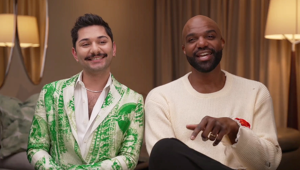
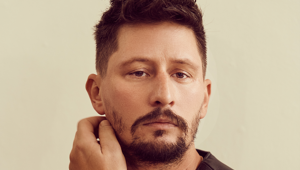
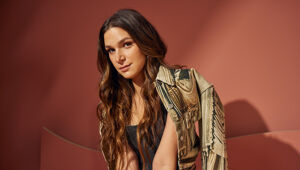
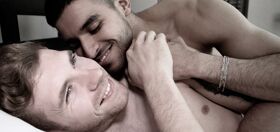
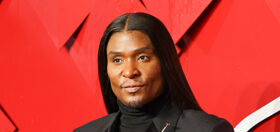
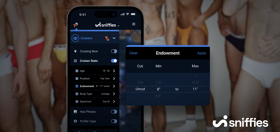
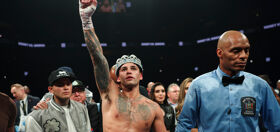
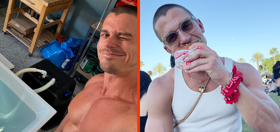
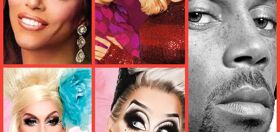

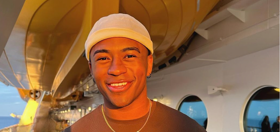
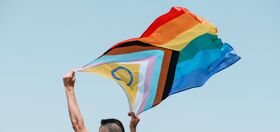
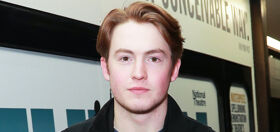
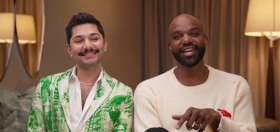

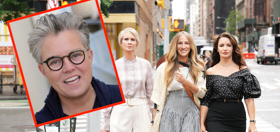
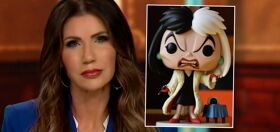
Donston
The photos themselves are whatever-ish. Decent looking. But it’s the same basic white backdrop, lighting and angle for everyone. It’s just not visually interesting. However, this is one of this site’s more interesting recent interviews.
I don’t really know how to feel about this identity stuff any longer. Identities are still important for a lot of people as far as establishing who they feel they are and feeing as if they’re genuinely “out”. However, there are a ton of cis people in hetero relationships, who will never even have a legit non hetero commitment, who are always going on about how “queer” and/or “gay” they are. While there’s plenty of people who are homosexual and/or don’t have overall hetero preferences and ambitions who never come out or never fully embrace an identity. That just shows how much sociology, circumstances, ego, and desired sense of self dominates this identity stuff. It’s starting to feel as if we need to evolve past identity politics and evolve past constantly seeking validation. Maybe it’s time to move on from the community rhetoric and just accept that everyone has their own thing going on, their own motivations and their own journey.
I’m all about embracing and respecting everyone. Gender, sexuality and orientation are very personal, individual things. Sexual and gender fluidity are real for some, and they comes in many different ways. The romantic, sexual, affection, emotional investment, commitment spectrum is incredibly varied. We need to accept all of that. However, we want to make sure we call out the problematic shit. We want to make sure we’re promoting that people confront traumas and mental health issues rather than merely seeing identities or behaviors as something they will sustain them. We want to make sure we talk about things like internalized homophobia, self-misandry, self-misogyny, toxic masculinity, hetero pressures, non homo worship, privileges that certain people have within the “queer community”. Because these things are pervasive.
It’s a delicate balance. And we’re not anywhere near that yet. Being Polly-Anna’s about everything is just as destructive as being hateful. But at least there’s more dialogue nowadays.
hankscott
Magnus is an incredibly creative photographer. He sees things from a perspective the rest of us don’t and then presents that view in a way that wows me.